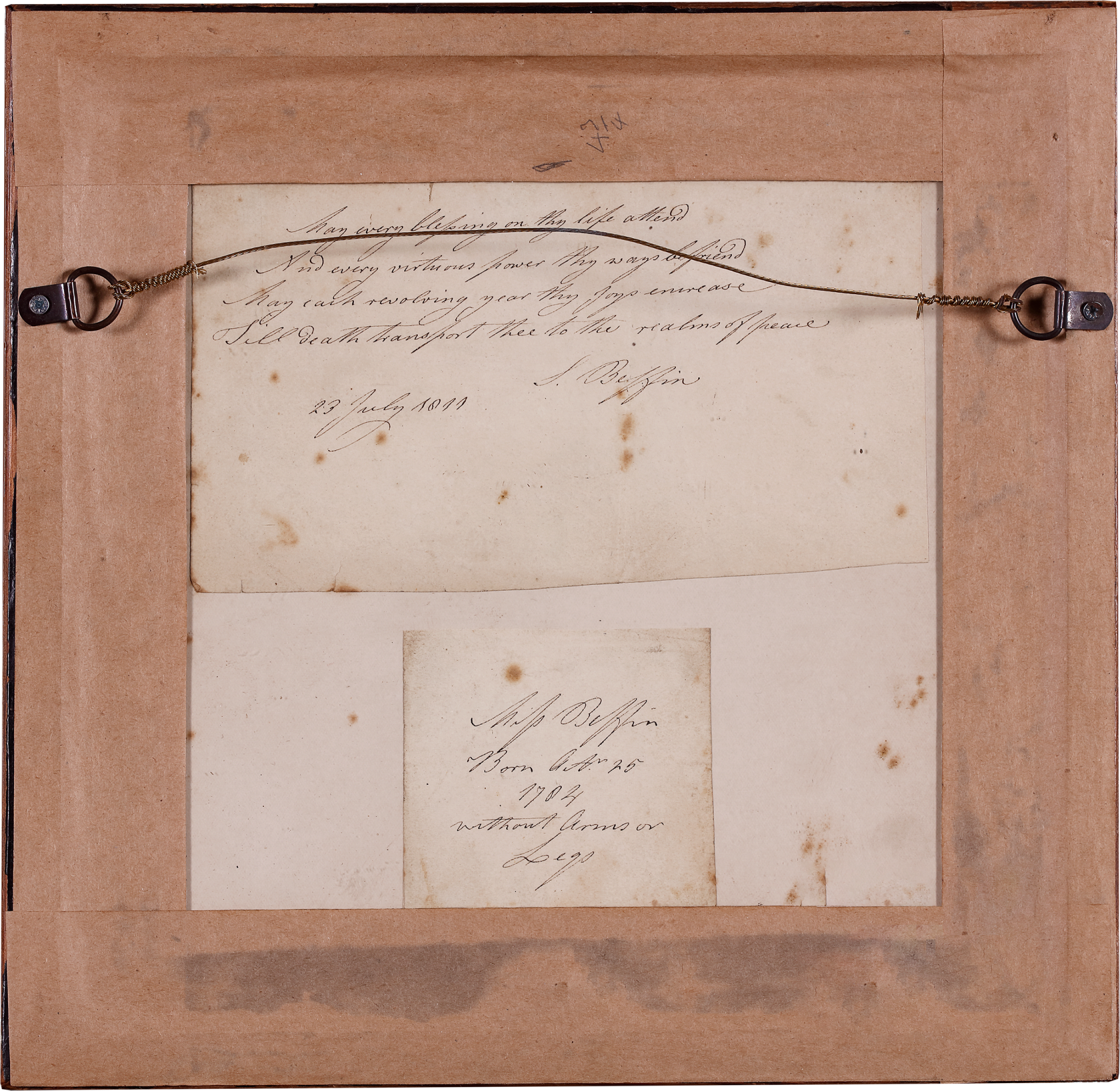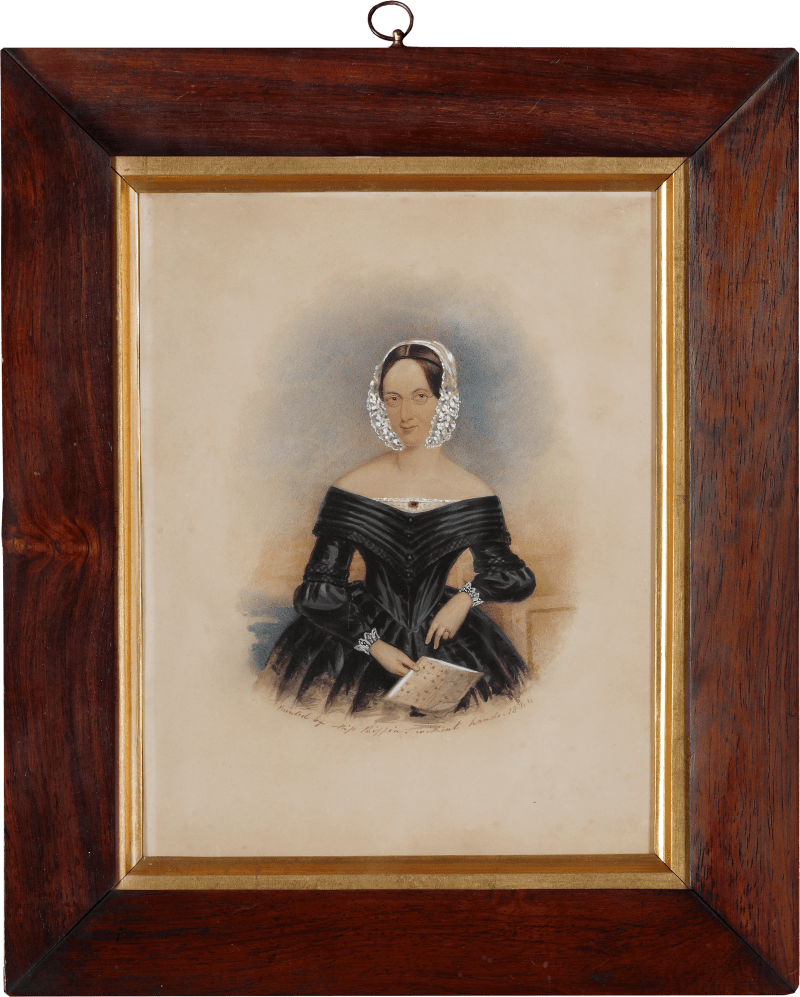Dated explicitly ‘23 July 1811’, Feathers was painted when the artist Sarah Biffin was touring the country with Emmanuel Dukes, a showman with whom she contracted herself, as a performer within his travelling sideshow. This delicate work is one of the earliest and largest known feather studies by Biffin.
Biffin was born without arms or legs, yet as a young child she had learned to sew - ‘At the age of eight tears I was very desirous of acquiring the use of my needle…’[1] – and whilst travelling with Dukes, she learned to draw and paint proficiently: ‘…at the age of twenty I felt anxious to try my skill in the art of painting. Here a naturally strong inclination prompted an assiduous application, and soon gave a facility to the use of the pencil; with what effect, let my humble productions speak for themselves.’.[2]
This sensitive study of feathers, a genre for which she became famous was painted...
Dated explicitly ‘23 July 1811’, Feathers was painted when the artist Sarah Biffin was touring the country with Emmanuel Dukes, a showman with whom she contracted herself, as a performer within his travelling sideshow. This delicate work is one of the earliest and largest known feather studies by Biffin.
Biffin was born without arms or legs, yet as a young child she had learned to sew - ‘At the age of eight tears I was very desirous of acquiring the use of my needle…’[1] – and whilst travelling with Dukes, she learned to draw and paint proficiently: ‘…at the age of twenty I felt anxious to try my skill in the art of painting. Here a naturally strong inclination prompted an assiduous application, and soon gave a facility to the use of the pencil; with what effect, let my humble productions speak for themselves.’.[2]
This sensitive study of feathers, a genre for which she became famous was painted during the formative years of her career and is an important surviving example of her famous feather paintings and reveals the precise attention to detail that fascinated the public and ensured her impressive rise to prominence. All of Biffin’s known feather studies are dated to this period during which she was travelling with Dukes. This study of fourteen feathers is one of the largest recorded works on this subject and demonstrates her astonishing technical ability and delicate handling of watercolour. Through subtle shading, Biffin achieves a delicate trompe l'oeil effect, which is a remarkable achievement for a young artist who was at the very beginning of her formal training.
Biffin was clearly aware of her talent and many of her artworks are proudly signed ‘without hands’ or ‘without arms’, including the present Feathers, which is inscribed on a piece of paper on the reverse: ‘Miss Beffin Born Oct 25 1784 without arms or legs’.
[1] Biffin, S. (1821) An Interesting Narrative and Proposals for A Print of Miss Biffin.
[2] Ibid.













